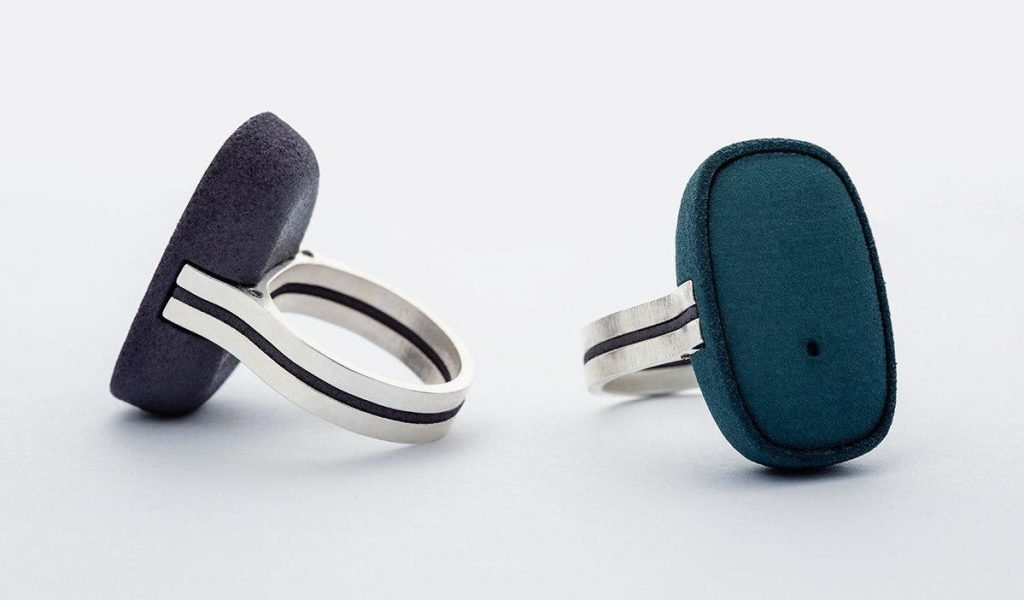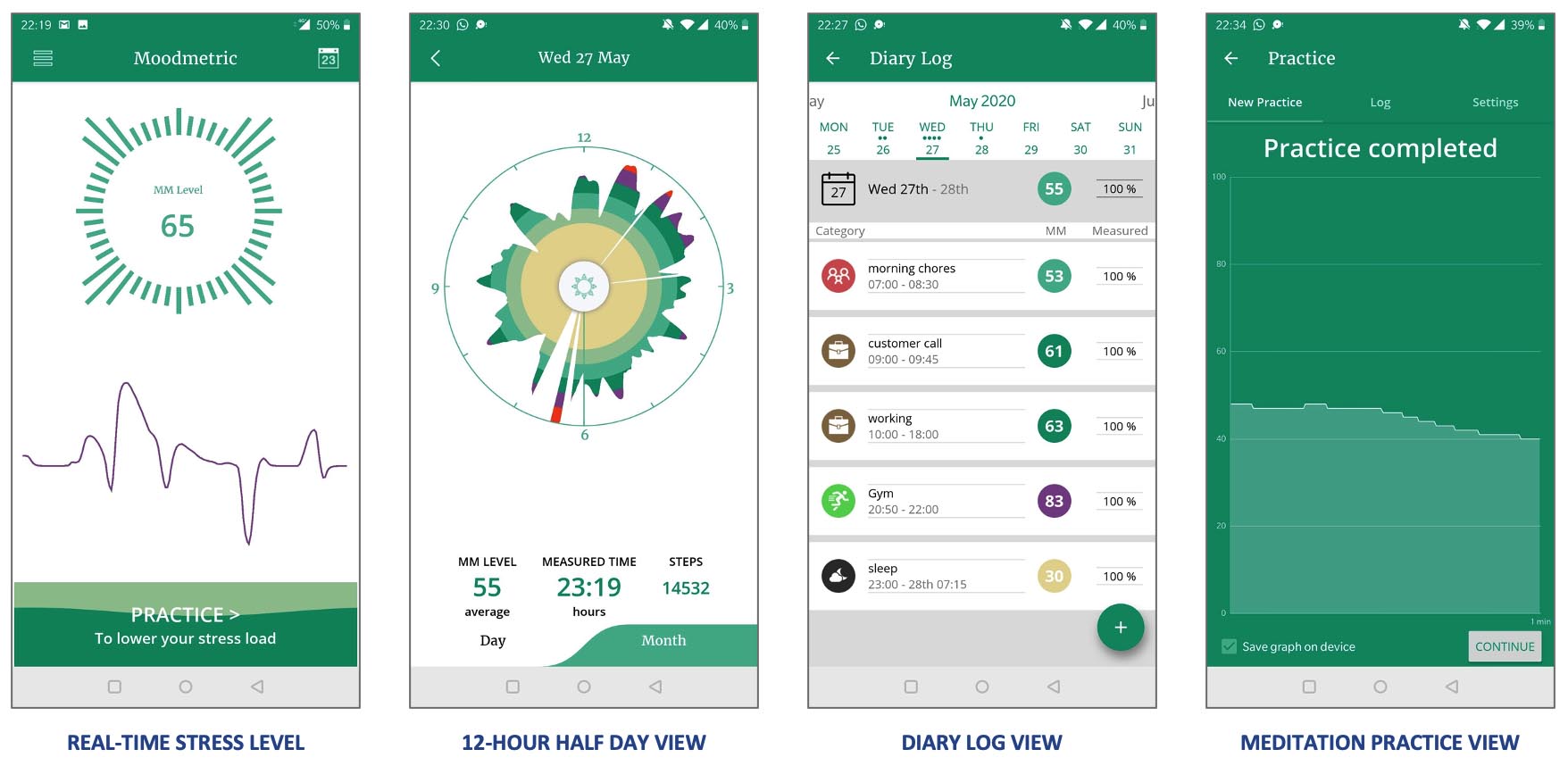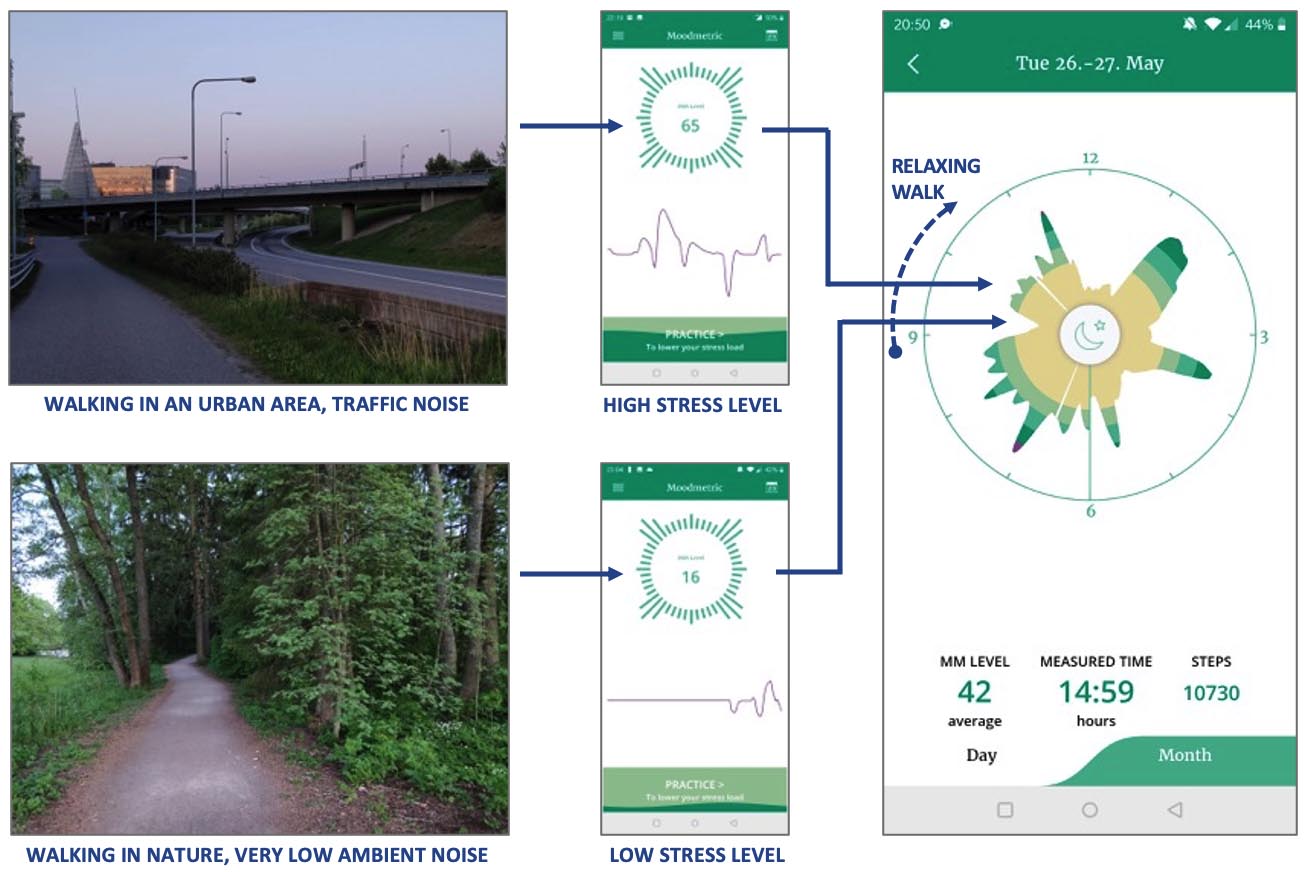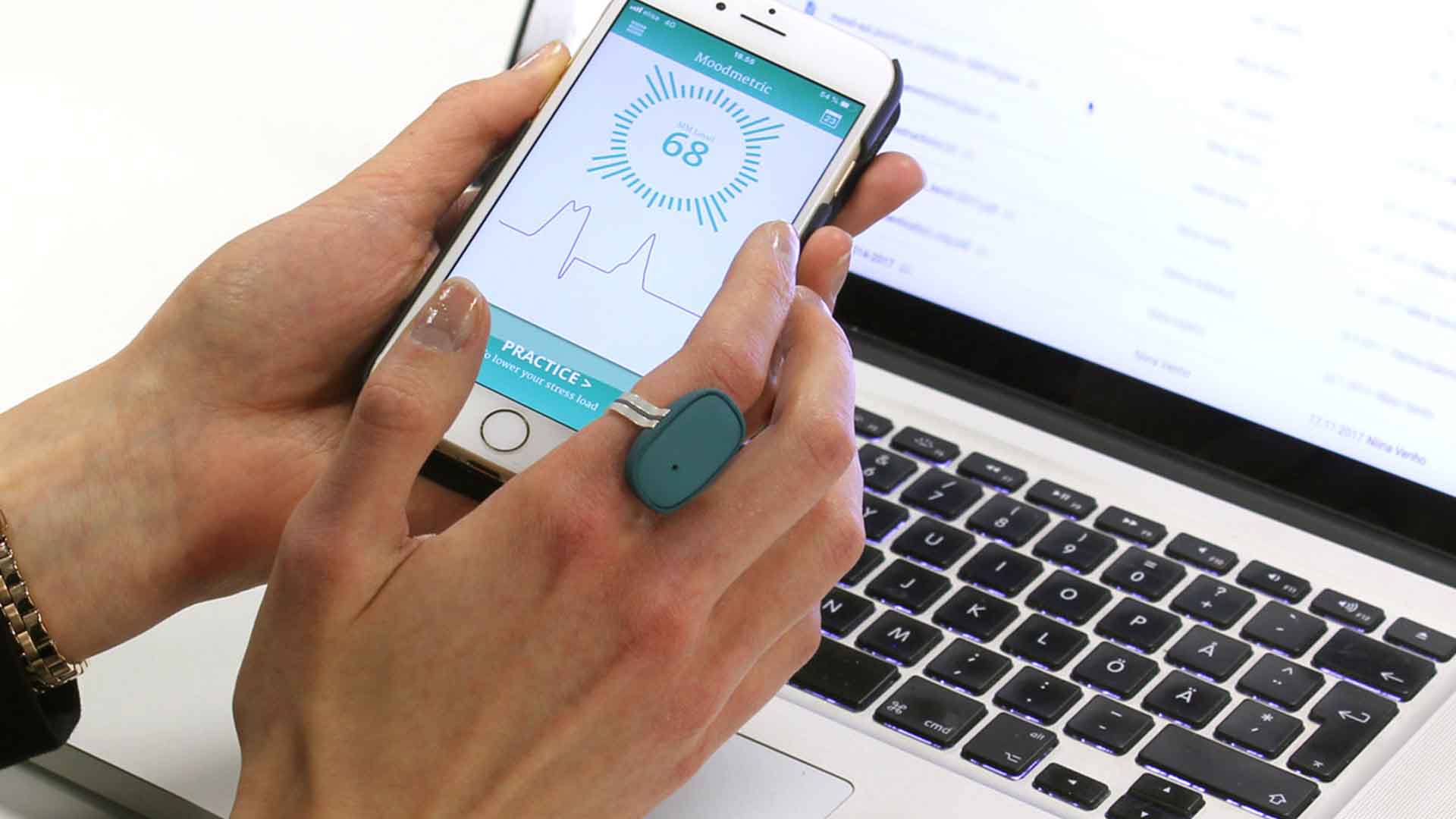In this article, I am reviewing the Moodmetric smart ring – it measures your stress and helps to manage it better. Ironically, due to a massive workload and daily routines ruined by COVID-19, I have been postponing this review for months. You might think what a waste of an excellent opportunity to test a stress management ring. But hey, there’s always enough stress in life for testing a stress management ring!
So, here you have it – the review of the Moodmetric smart ring. It totally surprised me with mind-blowing data about how my autonomic nervous system responds to various signals around me – and determines how stressed I feel!
Wellness Wearables Introduction
The smart ring is probably the best wearable form-factor for wellness, health, fitness, and activity tracking applications. There are a couple of reasons for that. Firstly, the many arteries in our fingers are excellent for measuring the heart rate and blood oxygen level. These are the primary biometric signals most of these applications use to determine your health and wellbeing. A smart ring is also comfortable to wear 24/7. A ring is unnoticeable, doesn’t fall off easily, and it doesn’t disturb you when sleeping.
What Does Moodmetric Do for You?

The Moodmetric Smart Ring measures your stress level on the finger. It uses a unique biometric signal – the electric conductivity of the skin, also known as Electrodermal Activity (EDA).
The mobile app shows your stress level with a simple index. It provides customized recommendations for how you can recover from stress. The ring helps to recognize your stressors and stress relievers. So, with Moodmetric, you can find specific ways to manage stress and balance the autonomic nervous system to feel and perform better in your daily life.
Who Can Use Moodmetric?
You don’t have to be wellness-savvy, a wearable geek or biohacker to use Moodmetric. Anybody who wants to monitor their stress level can use it, really. It is easy to get started, and you won’t be overwhelmed by data, graphs, and trends.
According to Moodmetric, also companies and various organizations such as health care professionals and researchers use it. Companies have used Moodmetric for monitoring the collective wellbeing of their organization and avoiding chronic stress among employees. You can read about two case studies of companies using Moodmetric: HERE Technologies and Gigantti.
Research organizations and health care professionals use Moodmetric to measure patients’ stress responses in real-time.
How Does it Work?
The measurement method used by Moodmetric is called Electrodermal Activity (EDA). Although Moodmetric is one of the few companies applying EDA in wearable tech, EDA itself, has been known for more than a hundred years. EDA is one of the most studied psychophysiological markers for describing the functioning of the autonomic nervous system. It is an indicator of the sympathetic activity of the autonomic nervous system that is associated with emotion, cognition, and affection. For example, lie detection tests are based on measuring EDA.
EDA is based on the electric conductivity of the skin. It varies according to the level of skin moisture and enables the measuring of electricity. The palmar and sole skin contains the highest density of the eccrine sweat glands, which is why Moodmetric’s metallic ring holder can measure changes in the electrical conductivity of the skin so accurately.
Moodmetric says that the measurement results should not be affected by hand movements or palm sweating.
Moodmetric App

The data points are stored on the ring memory and transmitted over Bluetooth to the Moodmetric App on your smartphone (press the little calendar icon on the app to initiate transmission).
The level of stress is calculated based on a complicated formula. The app luckily shows you the data simply via Moodmetric (MM) index on a scale from 0 to 100. The higher the score, the more stressed the user is. The stress level is expressed as follows: a long-term trend graph, daily charts, and real-time value. You can easily import events from calendars, or create events and activities (work, sports, family, sleep, etc.) manually. The app shows the average stress level during the events. You can also practice mediation with the app!
Getting Started
Getting on board with this stress measurement ring is easy. Moodmetric provides you with a helpful getting started-online guide on their website. You simply cannot go wrong in setting it up.
There is a brief calibration period when you take Moodmetric into use for the first time. All in all, it takes roughly 12 hours for Moodmetric to adapt to your skin moisture variations fully. However, you start to see the real-time stress index (violet line) on the app pretty much right away.
The nice thing with Moodmetric is that you don’t have to register if you don’t want to. However, if you do register, you can have Moodmetric remotely help you in interpreting the data!
How to Interpret the Moodmetric Stress Index?
Moodmetric has developed a proprietary algorithm for deriving the stress, the MM index. It indicates your arousal on a scale from 1 to 100. A high MM index value (usually 75 or above) means high arousal level, and that your sympathetic nervous system is very active. You can take this as both positive and negative feedback. It could be due to that you are enthusiastic. On the other hand, it can also mean that you are distraught, which is negative.
A low MM index value can indicate that your parasympathetic nervous system is working to recover from stress. A stress index 15 or below indicates that you are fine and calmed down.
Moodmetric Test Findings
The data Moodmetric provides is, in my opinion, truly fascinating! You can clearly see what stresses you most, and how can you relieve stress most efficiently. You can see an instant response between a stress signal and your autonomic nervous system reaction.
Here is an example of how walking in nature, through a silent patch of a park, instantly lowered my stress index. And how noisy traffic in an urban area raised it up again.

Hardware and Software
The first version of Moodmetric was launched in 2015, and the product does feel like a mature and solid piece of splash-water-resistant wearable hardware. The app software and synching are functioning properly without disturbing glitches. Battery-life allows you for roughly one week of use, after which you can plug it on USB and charge it fully in only 2 hours.
In Conclusion
Moodmetric’s design is most definitely elegant and sophisticated. Despite its sizeable embodiment, the device does not disturb you in regular use at the office, when taking care of daily chores at home, or when sleeping.
Can you use Moodmetric during sports and exercise? Yes and no. If you do yoga, or go out for jogging, walking or skiing, just take Moodmetric with you and you won’t even notice wearing it. However, forget it in team sports, contact sports, and whenever you are bound to take in some hard-hit and rough ride.
As with any wellness wearable, Moodmetric doesn’t reduce your stress. Its sole purpose is to provide you with simple, factual data to help you to manage your life better. It shows where your body and mind is at any moment so that you can adjust your level of doing and going accordingly. It is a tool that helps you to learn what’s right for you in terms of winding down, and what you should avoid doing to live a healthier life.

